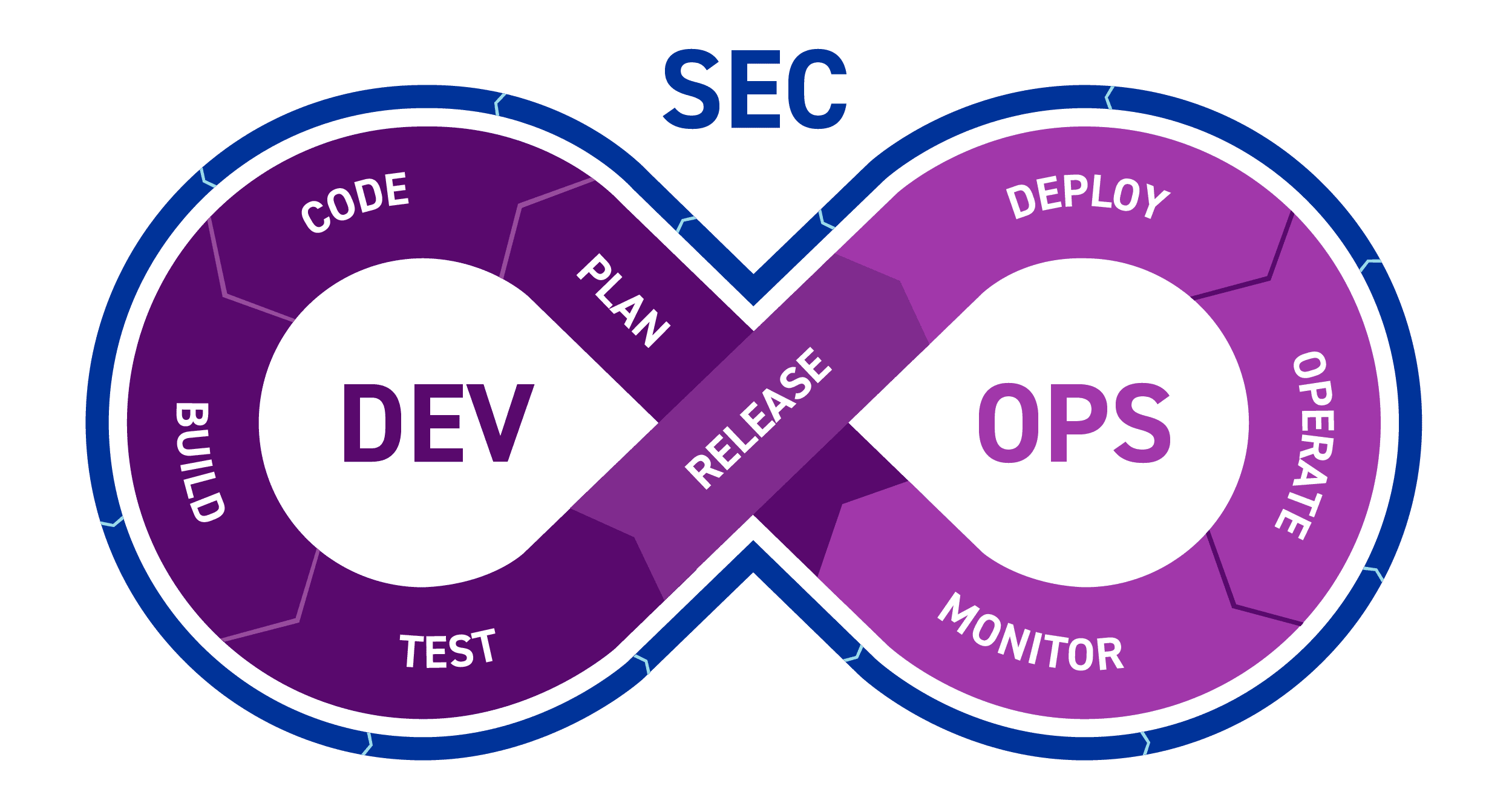DevSecOp
In today’s interconnected and fast-paced digital landscape, software development must go beyond delivering functionality to ensuring robust defenses against ever-evolving cybersecurity threats. With organizations rapidly adopting agile methodologies, integrating security into the Software Development Life Cycle (SDLC) has become a critical strategy. DevSecOps—an approach that merges Development, Security, and Operations—meets this challenge by fostering a culture of shared responsibility and continuous enhancement.
Unlike traditional methods where security is tacked on at the end, DevSecOps embeds security throughout the SDLC, creating a seamless integration that allows organizations to deliver secure, scalable, and compliant software at unprecedented speed.

What Makes DevSecOps Essential?
Traditional software development often treated security as a separate phase, creating vulnerabilities that were expensive to fix and left applications exposed to risks. DevSecOps redefines this process by embedding security practices into every stage of development. This proactive approach yields several benefits:
- Proactive Defense: By addressing vulnerabilities early, DevSecOps prevents breaches, mitigating risks to operations and reputation.
- Reduced cost: Fixing vulnerabilities during development is exponentially cheaper than post-deployment fixes.
- Regulatory Compliance: Adhering to frameworks like GDPR, CCPA, CPRA, CDPA, ISO27K, NIST, as such is simplified with integrated security practices.
Make sure to adopt a Shift-Left Mindset:
Emphasize early security interventions by training teams and introducing security practices in the initial stages of development.
Core Principles of DevSecOps
1. Automation and Scalability:
Automate tasks like code scanning, testing, and compliance checks. Use technologies like Infrastructure as Code (IaC) and Security as Code (SaC) to ensure consistency and scalability.
2. Iterative Development:
Replace traditional monolithic workflows with smaller, frequent updates to accelerate feedback and adaptability.
3. Collaborative Governance:
Integrate cross-functional teams and adopt a culture where security is a shared responsibility among developers, operators, and security experts.
How DevSecOps Works Across the SDLC
Image source: The U.S Department of Defense
1. Planning Phase: Integrating Security from the Start
In DevSecOps, security considerations are embedded at the planning stage. Teams identify potential risks and define requirements to incorporate secure architecture and frameworks.
- Conduct threat modeling to anticipate vulnerabilities.
- Define secure coding standards for developers.
- Plan for automated security testing within the CI/CD pipeline.
2. Development and Build Phase: Security in Code
Developers are equipped with tools and training to write secure code from the outset.
• Use Static Application Security Testing (SAST) tools to identify vulnerabilities in source code during development.
- Adopt secure coding frameworks and libraries vetted for vulnerabilities.
- Ensure dependencies are managed securely using tools like Software Composition Analysis (SCA).
- Identify the potential risks continuously throughout the development.
3. Testing Phase: Automated and Continuous Security Checks
Security testing is integrated into CI/CD pipelines, ensuring early detection of issues.
• Perform Dynamic Application Security Testing (DAST) to simulate real-world attack scenarios.
- Implement container security tools to validate the integrity of containerized applications.
- Automate regression tests to verify new changes don’t introduce vulnerabilities.
4. Release and Deployment: Built-In Security Gates
Before deployment, comprehensive checks ensure the application is secure and compliant.
- Utilize Continuous Integration/Continuous Deployment (CI/CD) pipelines with integrated security gates.
- Apply Infrastructure as Code (IaC) principles for consistent, secure infrastructure setups.
- Proactively monitor for potential vulnerabilities and risks
5. Operate and Monitor: Real-Time Vigilance
Security doesn’t stop at deployment; continuous monitoring ensures resilience against evolving threats.
- Monitor applications using tools that provide real-time dashboards of the security posture.
- Use feedback loops to integrate findings into future development cycles.
- Employ Active Cyber Defense (ACD) strategies to detect and respond to incidents promptly.
The Role of the Software Factory
At the heart of DevSecOps lies the software factory, a modular pipeline that automates development, testing, and delivery. The factory:
- Standardizes tools and workflows.
- Supports multi-tenancy for diverse projects
- Ensures compliance through continuous risk assessment.
By integrating security into every phase of the SDLC, DevSecOps offers a path to resilient, efficient, and compliant software development. This methodology is not just a best practice but a critical necessity in the face of modern cybersecurity challenges that are adding to the complexity of product development.
Key Tools and Frameworks in DevSecOps
To implement DevSecOps effectively, organizations rely on a suite of tools:
Static Code Analysis: SonarQube, Checkmarx.
Dynamic Testing: OWASP ZAP, Burp Suite.
Container Security: Kubernetes, Aqua Security.
CI/CD Orchestration: Jenkins, GitLab, CircleCI.
Why DevSecOps is the Future
To wrap up, DevSecOps is more than an enhancement of traditional DevOps practices—it’s a transformative approach to how security is embedded into software development. By shifting security left and emphasizing automation and collaboration, organizations can deliver resilient, compliant applications at the speed of innovation. As cyber threats evolve, embracing DevSecOps is critical for not only addressing cybersecurity as one of the emerging product quality attributes but also maintaining operational excellence.
